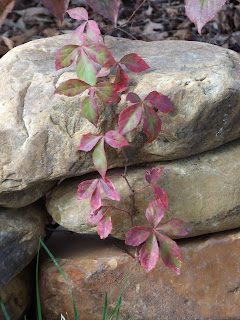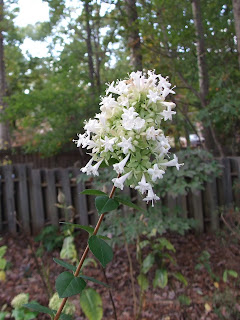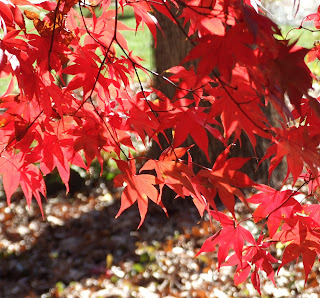It has been warm and dry throughout the summer and fall, long months with little rain.
The drought in August lasted for weeks. There was not much breeze and the air felt hot and dry. Lawns were brittle and brown. Trees began to lose their leaves.
Early one morning in September, the rising sun illuminated a cloud, peachy pink against a clear blue sky.
Pink cloud in morning,
Sailor's warning
Later that day, it started to rain, a gentle soft rain, that soaked easily into the soil. The slow and easy shower lasted all afternoon and night. In the morning at first light, I walked to the backyard to check the rain gauge. Over two inches of rain! The path felt soft beneath my feet, and there were no puddles of standing water. Even the rain garden looked empty.
By my calculation, 18,000 gallons of water had fallen on my yard. Where could the water have gone? The rain barrels were full, but they hold less than 150 gallons. It wasn't run-off -- my garden is below the grade of my neighbors.
The rain continued, firmer now, more insistent. By the end of the workday, the rain gauge indicated that two more inches had fallen. And still there were no pools of water, even in the rain garden.
Now it was raining steady and hard. Three inches more fell overnight. By morning, there were puddles along the path and the rain garden was a pond.
But by the time I returned home from work, the water had disappeared.
What happened to all that water? 65,000 gallons had fallen onto my yard, perhaps more draining from the surrounding yards.
The rain garden is designed to store 7,000 gallons. And the compost spread throughout the garden aborbs water like a sponge. The remainder must have been absorbed by the trees and shrubs.
I googled the water storage capacity of trees, but it was difficult to understand the articles in the academic journals. And the capacity differs, depending on the tree. I was too impatient to complete the research.
Trees are giant holding tanks. Our oak canopy can store a many gallons of water, while the understory trees and shrubs assist. We'll let it go that that.
My small yard of 1/3 acre can process 65,000 gallons of water rather handily.
I am proud of my garden. You go, girl.
.


























